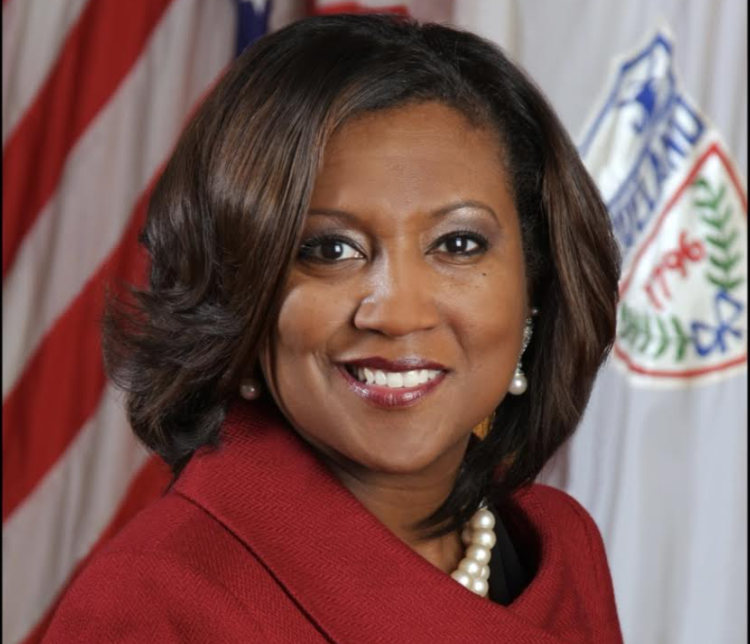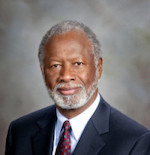In court documents related to all three legislative redistricting lawsuits against the state, GOP members of the Ohio Redistricting Commission had very little to say on the matter.
The parties challenging the General Assembly redistricting maps approved in September, including the League of Women Voters, the Ohio Organizing Collaborative and a group of Ohio residents, were asking for documents and statements related to the decision making and process of approving the maps.
Commission co-chair and House Speaker Bob Cupp, Senate President Matt Huffman, Gov. Mike DeWine, Auditor Keith Faber and Secretary of State Frank LaRose kept mum, citing privileges such as attorney-client, legislative and even gubernatorial for a majority of requests made by the challenging groups.
The organizations and Ohioans were seeking information in the ongoing court cases related to compensation for services in creating the maps, anyone who communicated with members of the commission about proposed maps (both Republican and Democratic), measures through which the map criteria were determined, any meetings between commission members and the timeline for the drafting of a statement released after the maps were approved explaining how the commission determined statewide voter preferences in drawing the maps.
Both Cupp and Huffman objected to nearly all statements and documents requested, including those that asked for explanations on how the commission determined if the plan complied with the Ohio Constitution or whether it favored or disfavored a political party.
In documents submitted to the Ohio Supreme Court, Cupp said he and unspecified others “negotiated with all the members of the commission, including the Democratic members, in order to reach a compromise 10-year plan, but those negotiations did not produce a compromise 10-year plan because the Democratic members would not modify their proposals to move toward the plan introduced by the Commission even thought the enacted plan moved towards the plans proposed by the Democratic members of the commission.”
Currently, Republicans hold a 64-35 supermajority in the Ohio House, and a 25-8 supermajority in the Ohio Senate. Republicans said the maps for the House and Senate approved last month reduced the GOP stronghold with a House breakdown of 62 seats to 37 Dems, and 23 to 10 in the Senate. Dave’s Redistricting App projects a 65-seat GOP supermajority in the House. In an average of the last 16 statewide elections not including non-partisan judicial races, Republicans have won a 54% to 46% advantage. Democrats’ proposed maps would’ve given them 42 House seats to 58 GOP seats and 13 Senate seats to 20 GOP seats.
Huffman echoed Cupp’s statement about attempted compromise with the Democrats, and said he communicated about the plans with members of his staff, members of the commission, GOP caucus budget director Ray DiRossi and Democratic caucus mapmaking consultant Chris Glassburn, House Republican staffer Blake Springhetti, DeWine, LaRose, Faber, Cupp, state senator and commission co-chair Vernon Sykes and House Minority Leader (and commission member) Emilia Sykes.
The Senate president also maintains his past defense that the maps he supported and which were approved by the commission “complied with all the mandatory requirements of the Ohio Constitution.”
Democrats have said in court documents and publicly that they did not feel included in the redistricting process by the majority-Republican commission, and that the approved legislative map is not sufficient.
Fellow commission members DeWine, Faber and LaRose denied involvement in drawing commission maps or drafting the statement of statewide voter preferences, and balked at insinuations that they knew maps were approved after the deadline.
The League of Women Voters asked DeWine to admit that the Ohio Redistricting Commission voted to adopt the legislative maps after midnight, making the approval effective Sept. 16, not on the constitutional deadline of Sept. 15.
“On the evening of Sept. 15, 2021, the Governor was focused on doing his job as a member of the Ohio Redistricting Commission, not simply watching the clock,” DeWine’s response stated. “Thus, he did not keep track of the precise time Senate President Huffman’s proposed amendment was introduced and what time the proposal was put to a vote.”
A nearly-identical response turned up in Faber’s and LaRose’s answer to questions about the deadline passage.
When asked who he communicated with regarding the proposed maps, the governor said he “cannot possibly identify every individual that he has communicated with about the 9/9 or 9/16 plan.”
“The Governor communicated with all members of the commission, the First Lady, the Lt. Governor, members of the Governor’s staff including but not limited to members of his legal staff,” attorneys for DeWine wrote.
The governor said he also communicated “via testimony and one personal meeting each at the request of their employers” with DiRossi and Glassburn, both of whom presented the proposed maps from their side of the political aisle.
LaRose also said it was burdensome to ask him to specify everyone he’d interacted with regarding redistricting, but did say he’d “attended several impromptu meetings with the knowledge of at least one Commission member in the first two weeks of September to discuss state legislative redistricting including attempting to obtain the votes needed for ten year general assembly district maps.”
Asked who were involved in drafting or creating the proposed maps, GOP commission members objected as well, with DeWine and others emphasizing they’d had no hand in the drafting process.
“The Governor believes, based upon representation of others including public testimony, that Ray DiRossi was the primary map drawer of the proposed plan including amendments submitted by legislative Republicans, and Chris Glassburn was the primary map drawer of the plan submitted by legislative Democrats,” DeWine’s attorneys wrote.
DeWine, Huffman, Cupp, LaRose and Faber also had to provide depositions for the court cases, which occurred last week. Democratic commission members state Sen. Vernon Sykes and House Minority Leader Emilia Sykes were also subject to deposition, along with caucus map-makers DiRossi and Glassburn.
Oral arguments in front of the Ohio Supreme Court are scheduled for December.
• • •• • •
This story is provided by Ohio Capital Journal, a part of States Newsroom, a national 501 (c)(3) nonprofit. See the original story here.




















